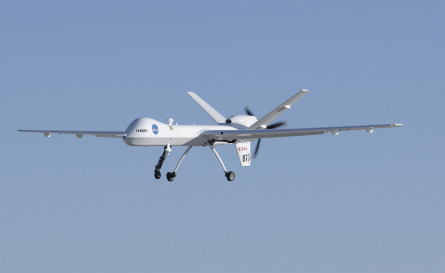NASA has flown an automatic dependent surveillance - broadcast (ADS-B) transponder on a large unmanned air vehicle for the first time.
The 15 March flight aboard the General Atomics Aeronautical Systems Ikhana, a NASA version of the Predator B, is a step in the process of introducing UAVs into civilian airspace.
"For us this represents the first hardware for the unmanned air system in the national airspace (NAS) project," says NASA. "We're very much involved in that process as an operator of UAS."
 |
|---|
| © Tony Landis/NASA |
The flights are part of a government-wide push to include UAVs in civil airspace. UAV flights are increasingly common, but flights in the USA are restricted to limited and pre-cleared airspace. Government agencies are in the midst of a push to integrate unmanned systems into unrestricted civil airspace, making them practical for a wide variety of missions, including commercial uses.
The US Federal Aviation Administration, mandated by a clause in its recent fiscal year 2013 budget reauthorisation, is setting up six test sites, and must provide later in 2012 a framework to fully integrate small UAVs in civil airspace.
The ADS-B system transmits its host aircraft's GPS-based position information to a ground network that routes the data to air traffic controllers. The network, which forms the surveillance backbone for the next-generation air traffic control system, is set to become operational in 2013. Aircraft must be equipped by 2020, at which time radar surveillance will become a secondary means of surveillance.
NASA also selected ADS-B technologies for a high-altitude balloon flight, meant to further test the system's capabilities.
Source: Flight International


























